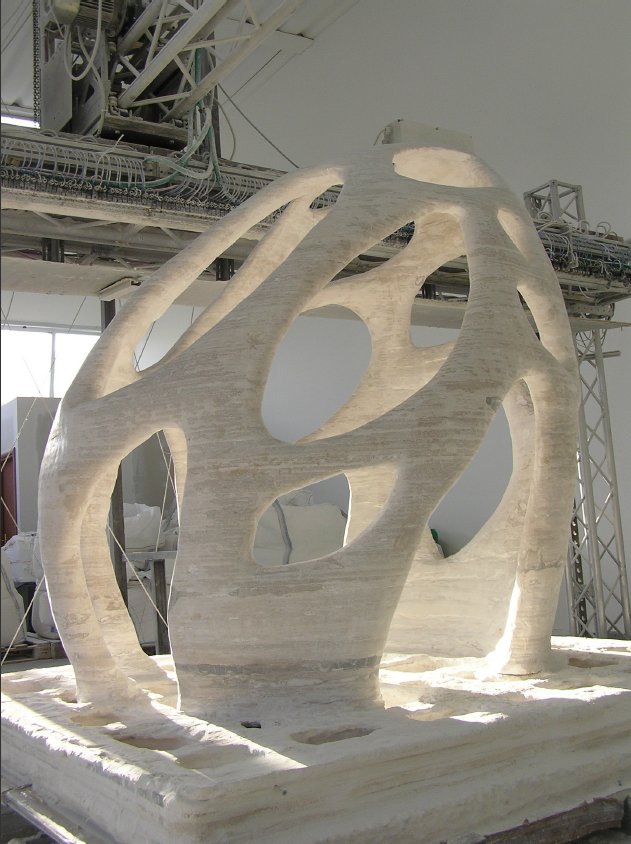Monolite UK Wants to 3D Print You a House

The D-shape created Radiolaria during the excavation stage. Courtesy of Monolite UK.
March 8, 2012
My wife loves the Sims. She plays it for hours at a time, more often than not just on the design of a virtual house. Different types of walls, roofs and windows zip by as she searches for just the right one. It’s almost a form of computer-aided design. What if my wife could design a home on her game, then print out the shell by using additive manufacturing?
That probably isn’t the exact question that drove Enrico Dini to found Monolite UK, but it might have been something similar. We’ve covered architectural additive manufacturing before, but this process is a bit different and we’ll go a little deeper.
The creation process used by Monolite UK follows the standard steps you’d expect from any sort of 3D printing. An architect works up a CAD design of a building, then feeds it into a building apparatus. The apparatus in this case is called D-shape.
Like with other types of 3D printing, the build object is created a layer at a time. In this case, the layers can include wiring, cabling and piping cavities, along with decorative touches like statues. All of this is accomplished without a drop of cement.
Monolite uses regular sand and the extruder head pumps out a binder agent. Once a build is complete, the structure requires 24 hours to fully set. When the 24 hours are up, the structure is dug out of the surrounding sand (similar to how laser sintering works). Any sand that hasn’t been used to build the structure can be reused.
The end result of a build using D-shape and the Monolite binder is a marble-like structure that is, according to the company, stronger than concrete without needing to rely on internal iron supports. Monolite also expects (and this is true of most rapid manufacturing) that building a house with D-shape will go much faster than standard methods of construction.
The company predicts that even with the higher cost of their binder material, compared to regular concrete, the final price tag on a building will see a significant reduction. Another possible benefit to this method is improved safety. The build process requires less human interaction than traditional techniques, meaning accidents are less likely.
Monolite is currently looking to build a D-shape printer large enough to produce full-scale buildings. Enrico Dini is the subject of a documentary named The Man Who Prints Houses about his struggles to get the company moving.
Below you’ll find the documentary trailer.
Source: Monolite UK
Subscribe to our FREE magazine, FREE email newsletters or both!
About the Author
John NewmanJohn Newman is a Digital Engineering contributor who focuses on 3D printing. Contact him via [email protected] and read his posts on Rapid Ready Technology.
Follow DE






